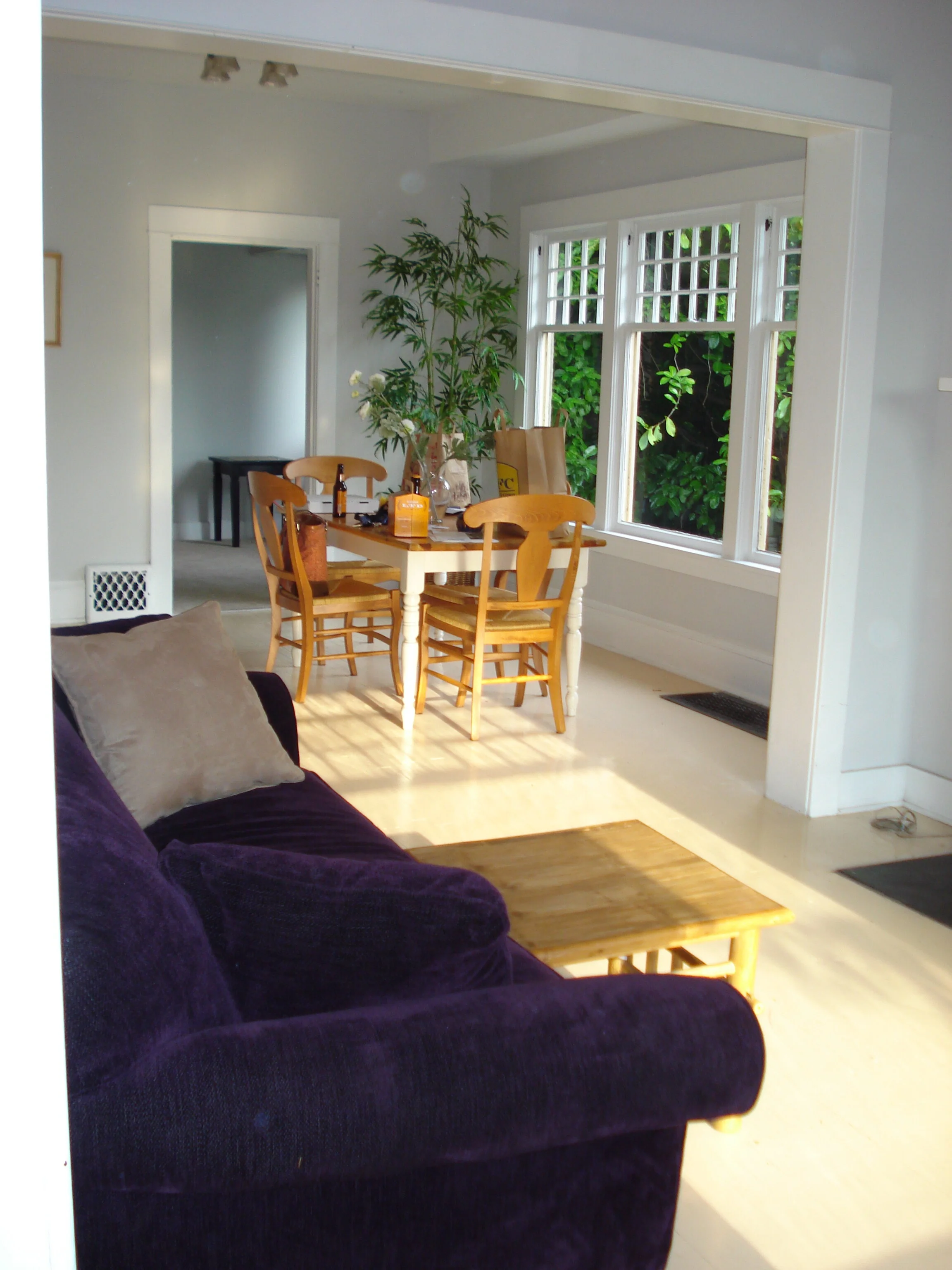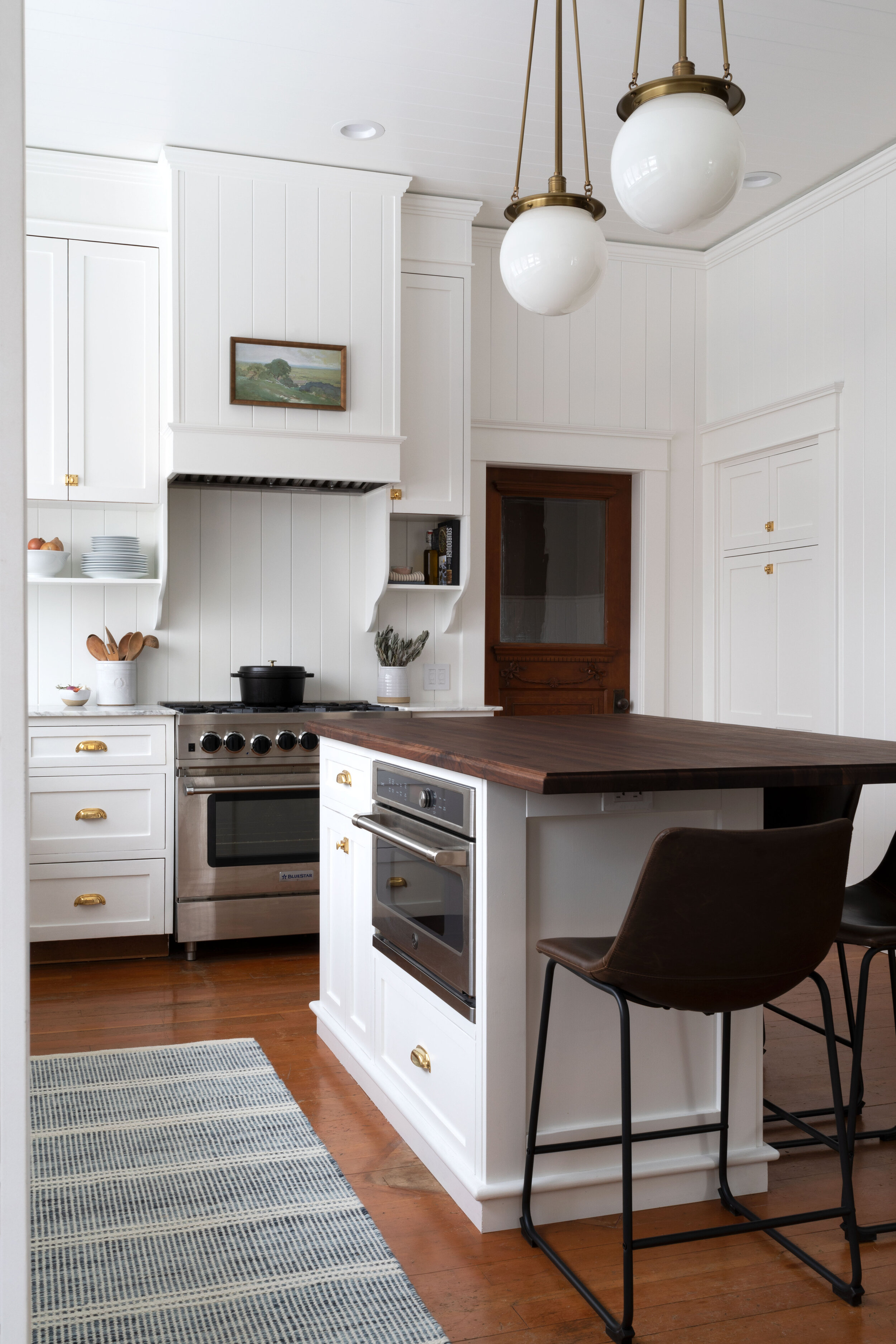The financing we used to buy the new house (before paying it all off)
Downsizing has long been a dream of ours and in 2023 we took the plunge. We traded our dream country home for an in-town fixer and downsized many aspects of our lives. In a previous post we looked at the finances behind our changes and shared how much we’re saving each month. And today we’re looking at the nuts and bolts behind the layers of financing we used to buy the new house before paying it all off.
the Farmhouse laundry room, art by my mom :)
I should set the stage by saying that we had talked about moving from the Farmhouse for all the reasons discussed before and as a result, the idea of relocating into town was already on the back burner. So when our current home listed, we moved quickly to secure financing, put in a full-price/inspection-waived offer on day 2 on the market. By day 3, we were mutually accepted and our work to finish the Farmhouse kicked into high gear!
Today I’m walking through the financing in greater detail. This post goes a bit deep into the world of home buying but it isn’t meant as financial advice. We’re sharing because sharing is what we do and our process is simply offered as food for thought. I think financing and debt can be really scary and we all need to assess our own comfort levels when it comes to taking on loans. But whatever your comfort level is, it’s true that debt can be used to great effect for building wealth in real estate.
Taking out a high-interest mortgage
We knew right away that we’d have to secure a mortgage in order to buy the new house. Like most people, we didn’t have half a million dollars sitting around. Heck we didn’t even have a 20% down payment in our bank account. So once we toured the property and knew we liked it, we went home and started working on the financing. The plan from the begging was this:
1. secure a primary residence mortgage on the new house with funds from an existing HELOC for the down payment
2. finish and sell the Farmhouse
3. pay off the new mortgage and HELOC to land on the other side debt free
It was a simple plan, but honestly we weren’t even sure if we could qualify for another mortgage, especially at a 7+ percent interest rate. But the numbers lined up pretty quickly. Garrett worked with a local bank for a pre-approval letter and after our offer was accepted, he compared rates with a broker but ultimately stuck with our local bank for the mortgage. Let’s dive into the nitty gritty of the loan in more detail…
Using a HELOC as down payment funds
We had already taken out a HELOC (home equity line of credit) on the Farmhouse and used that for the down payment on the new house. HELOC’s allow you to access the equity (the difference between market value and the outstanding mortgage balance) in your home without having to do a cash-out refinance or second mortgage (or sell!). These can be incredibly useful tools since, in our experience, they are very low cost to open/setup and are just there for whenever you might need money for a purchase, down payment or major project—you don’t have to sit on, or save up, a pile of cash. And you are not paying interest on any funds you haven’t drawn. It’s simply an open line of credit (with your home as collateral) you can pull from at any time and for any reason. An additional benefit is that per dollar borrowed, HELOCs have less impact on your debt-to-income ratio vs. a standard mortgage since the payments are interest only. The debt-to-income ratio comes into play when taking out a mortgage, and can be really restrictive if you have multiple mortgages or generally high debt.
BUT…before you draw from a HELOC you’ll want to have a plan for how you’re going to retire the line of credit given the payments are interest only. And with variable interest rates, the payment will get bigger as interest rates increase. Whoa, whoa, whoa, you may say. Having a 5- or 6- figure line of credit is too much temptation and risk. Indeed, know thyself. A hammer is a tool that can be used to build, it can also be used to demolish. A HELOC is a financial tool. Use it for building.
Lastly it can take a period of weeks, even months to open a HELOC so it's a good idea to complete the process well in advance of when you might need the funds. Fortunately, we opened a home equity line of credit on the Farmhouse a few years before so it was ready and waiting when we put in our offer on the new house.
As a counterpoint to our use of a HELOC, there are financial experts who warn against HELOCs, including Dave Ramsey who finds them deeply concerning.
Counting rental income
Another facet of our loan is that we were able to count projected rental income from the Farmhouse to help qualify for the new mortgage. Put another way, we purchased the new house as a primary residence and the underwriter was able to look at the Farmhouse as a future rental and include that future rent as part of our income. This is really helpful if you are financing the purchase of a 2nd home, but surprisingly not everyone is allowed to do it.
Underwriters, at least in our experience, have a requirement that you show 12 months of landlording experience in order to count any projected rental income from the departing residence (or from the new home if purchasing as an investment property) to contribute toward your qualifying income. And it can be as small as renting a second bedroom on Airbnb, but it has to appear on your tax return. Now this requirement might be different for different lenders, and the ins and outs of financing vary depending on the loan product and situation, so do connect with a good mortgage broker to get options tailored to your specific circumstances. But I wanted to mention this as a way to start down the path of real estate investing.
The counterintuitive benefit of getting the highest-interest loan
The last and most counterintuitive facet of our financing is that we tried to get the highest possible interest rate on our mortgage for the new home. This had everything to do with the fact that we were planning to use the proceeds from the upcoming sale of the Farmhouse to pay off the new mortgage. So the rate and total monthly payment didn’t actually matter much to us. Instead, we cared about how much the loan cost to take out. By taking on higher interest rates we got lender credits (which amount to cash money at closing), reducing the overall cost of taking the loan out.
You can also go the other direction and “buy down” the rate to lower the monthly payment which is much more common and advisable in most circumstances. The amount you get in lender credits per rate increase depends on the pricing when you lock your rate. The take away here is that if you ever find yourself in a situation where you’ll be paying off a mortgage shortly after origination, make sure you get as much in lender credits as you can.
Of course taking the higher interest rate was a bit of a gamble because if we hadn’t been able to sell the Farmhouse in a timely manner (and nothing in real estate is ever certain) we would have been stuck with higher monthly payments. But considering the Farmhouse was almost ready for market and we were confident it would show beautifully, we were willing to take the risk. And we had a comfortable plan B if it didn’t sell – we could rent the Farmhouse on Airbnb as a vacation rental.
One other thing to note, while we have loved the freedom of paying off our mortgage, we’re not mortgage-adverse. If we could have taken our 2.7%, 15-year mortgage with us from the Farmhouse, we would have. There’s a debate in the financial community about if it’s better to hang on to a mortgage and use your cash for other investments, or to spend all your cash on paying off your mortgage. At the end of the day it comes down to an intersection of personal preference, rates, and alternative options. And we don’t have strong opinions either way, though we’ve tended to use more financing than Dave Ramsey would recommend. But with a rate of over 7%, the new mortgage cost us $75 in interest per day, and that we were adverse to.
Mortgage payoff
Ultimately we were really fortunate to be in a situation where we had a couple months of overlap between when we took possession of our current home and the closing of the Farmhouse sale. It made the transition much easier and allowed us to be fully moved out when we listed. Thankfully the Farmhouse was only on the market for 36-hours before we received a full-price offer, so we were able to keep our timeline short in the end.
When we closed on the sale, the proceeds paid off both the Farmhouse mortgage and the Farmhouse HELOC in standard fashion and left us with a big pile of cash (tax-free since it was proceeds from a primary residence). The cash sat in our account for less than 24-hours before we scheduled a payoff for the new in-town house mortgage. In the end we only made one payment on the new mortgage before paying it off in full and landing on the other side of this process debt free.













